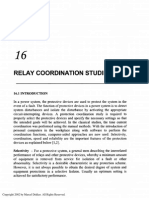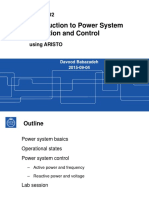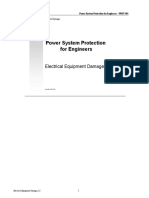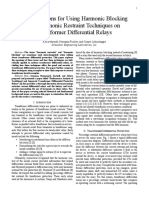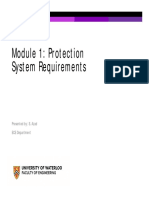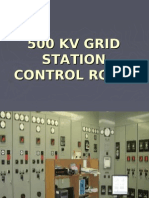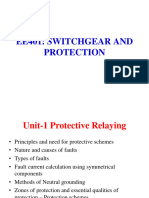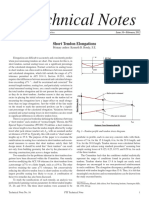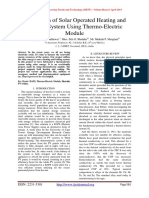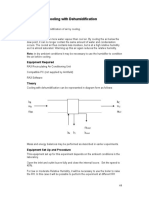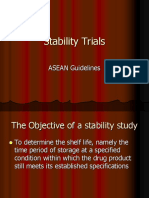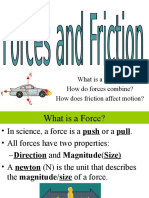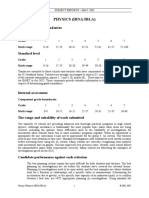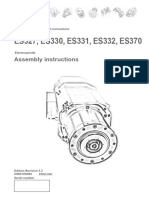Department of Electrical & Electronics Engineering NIT Trichy Welcomes You all
Short-term course on Power System Protection Issues with Distributed Generators
3rd 4th August 2012
Co-ordinator P.Raja, M.Tech., Assistant Professor Dept. of Electrical and Electronics Engineering NIT, Trichy - 15
�Short-term course on Power System Protection Issues with Distributed Generators
3rd 4th August 2012
Session 1
Fundamentals of Power System Protection
P.Raja, M.Tech., Assistant Professor Dept. of Electrical and Electronics Engineering NIT, Trichy - 15
�Session I
BASIC PROTECTION RELAYING
�What is Protection? - General
The act of protecting something / somebody Necessary when there is something wrong / abnormal condition Avoid the process of expansion should not allow the wrong / abnormal condition to spoil something is good In our discussion Protection of Power system
�Need for Protection Analogy
Rain Umbrella
Processing & Signaling
Action
Sensing
�Discussion on
Need for Protection Abnormal conditions of Electric Power System Components of Basic Protection system Fault Statistics Relaying schemes
Different discrimination
Methodology of implementation
�Discussion on
Expected quality of a Relay Basic operation of a Relay Concepts of
Over current relay Directional over current relay Differential protection Distance relay
�Components of Power Systems
Generator Bus Bar Transformer Transmission Line Loads
Transformer Rain Current Voltage Frequency
Voltage Frequency
Transformer
Generator
Bus Bar
Transmission Line
�Fault conditions
Insulation Failure in any component Open conductor fault Line faults
�Abnormal Conditions
Abnormal changes in
Current (Increment / Decrement) Voltage (Increment / Decrement) Frequency (Increment / Decrement)
Who causes the abnormality..?!
Fault Basic Circuit concept Short circuit Increase in current & Decrease in Voltage
�What is Protection?
The function of protective equipment is not the preventive one its imply Takes action only after a fault has occurred Its the ambulance at the foot of the cliff rather than the fence at the top
�Fundamental Principles
The essential and discriminative removal of an abnormality from a power system To minimize loss of supply and damage Two Basic requirements of the system
Must be provided with sufficient number of CBs Appropriate action of controlling and disconnecting equipments and there by remove the abnormal conditions
�Fault Statistic Probability of Faults
Overhead lines CTs, PTs & control equipment Switch gear Transformers Underground cables Generators 50 % 12% 12 % 10% 9% 7%
Generator
Bus Bar
Transmission Line
�Overhead Line Protection (Probability of Occurrence)
Line Ground (LG) Line Line (LL) Line Line Ground (LLG) 5% Line Line Line (LLL) 85% (least severe) 8% 2% (Most Severe)
�Methods of Discrimination
Voltage Frequency
Transformer
Transformer
Generator
Bus Bar
Transmission Line
�Methods of discrimination
By current magnitude By time By current with time By time and direction By distance measurement By distance with time By current balance
�Methods of discrimination
By Opposed voltage protection By Phase comparison Distance protection with signaling channel
�The Mediator!?
Voltage Frequency
Transformer CB Sensing Transmission Line
Transformer
Generator
Bus Bar
Relay
�OC Differential Directional Distance Digital Distance
Travelling Wave 1980
Adaptive ANN Wavelet Wide area Hybrid
1900
1920
1940
1960
2000
2005
Numerical Network Based P based Digital Static Electromechanical
�Components of Power System Protection
�Instrumentation Transformers
CT
Characteristics
PT
�Expected qualities of Protective Relay
Sensitivity Selectivity Speed Simplicity Reliability Economics
�Relaying Over current
Sensing Current Current Transformer Relaying Electromechanical Attraction Induction
Comparison Pick up value Discrimination by level of current
�Over current relay
Disadvantage of only current discrimination
Transmission system Zonal protection Primary and Back up protection
Importance of timing
�Over current Relay with Time
Back up Relay Primary Relay
R1 R2 R3 R4 R9 R5 R6 B3 R7 R8
B1
B2
B4
R1
R2
R3
R4 R9
R5
R6 B3
R7
R8
B1
B2
B4
�Parameters
Pick up value
Minimum operating value required to operate the relay How do you select?
Plug setting multiplier (PSM)
PSM=Fault current at the relay coil/Pick up current Pick up current = Rated secondary of the CT x Current setting
Time multiplier setting
�Over current relay with timing
Inverse time over current relay
A - IDMT B - Very inverse C - Extremely inverse 0.14(TMS ) top PSM 0.02 1
13.5(TMS ) top PSM 1
80(TMS ) top PSM 2 1
�Over current relay with Directional Element
Simple necessity of Directional element in Over current relay
A B
Parallel Feeder Ring Main system
�Implementation of Electro-Mechanical Relay
Fuse Attraction Based Induction based Shaded pole Watt-hour structure Induction cup structure
�Shaded-Pole Structure
Derivation of Torque
�Watt-hour structure
E core U core Can be used for directional operation
�Differential/ unit relay
Sensing two end currents Find the difference If the difference > set value Relay operates Zonal Protection
End 1 End 2
Pilot wire
�Applications of Differential Relay
Unit Protection Apparatus of smaller distance
Transformer Alternator Motor Transmission Line*
�Disadvantage of Over current relay
R1 B1 B2 F1 F2 F3
Fault Current
LLLG LLG
LG Ipu Reach of LG Reach of LLG Reach of LLLG Distance From Relay location
�Distant Relays
Simple over current relay
Over reach or Under reach problem
R1 B1 B2
ZL1
F1 F2 F3
ZL2 ZL3
Fault F3 F2 F1
Current at Location IR3 IR2 IR1
Voltage at location VR3 VR2 VR1
Compare |VR3|>|IR3||Zset| |VR2|>|IR2||Zset| |VR1|>|IR1||Zset|
Desired response Restrain Verge of Operation Trip
�Distance Relay
Simple Impedance Relay See saw Reactance Relay Mho Relay
General Torque Equation
T k1 I R k2 VR k3 VR I R cos( ) k4
2 2
Will be continued in Transmission Line protection
�Thank you
Questions if any?!


